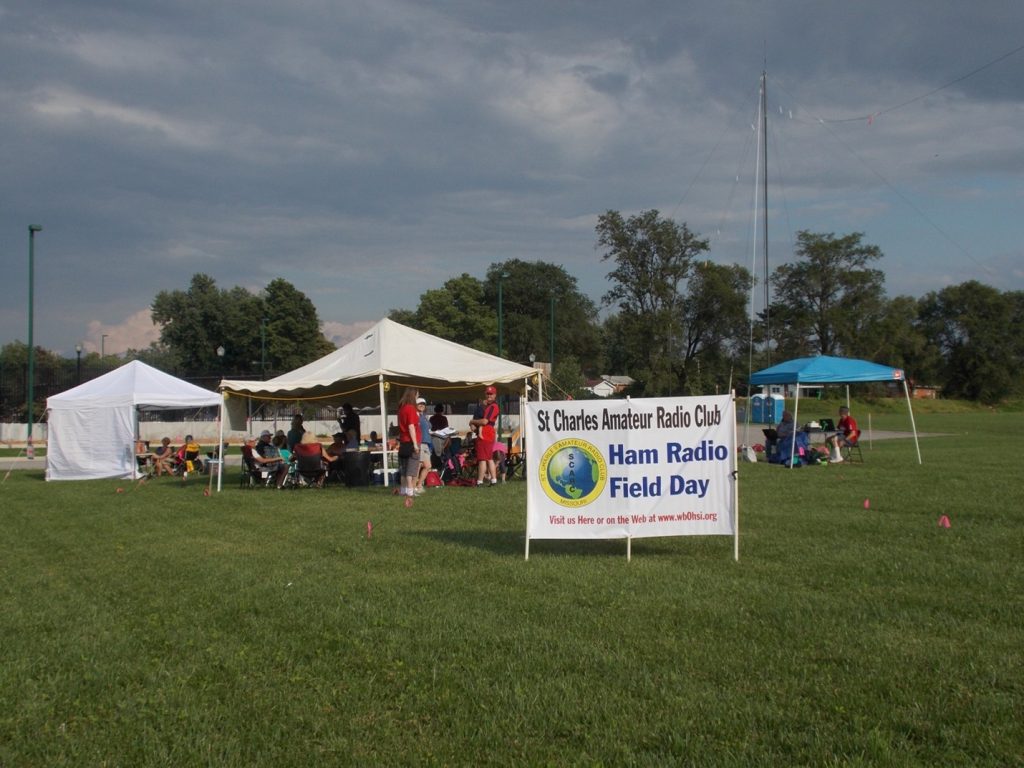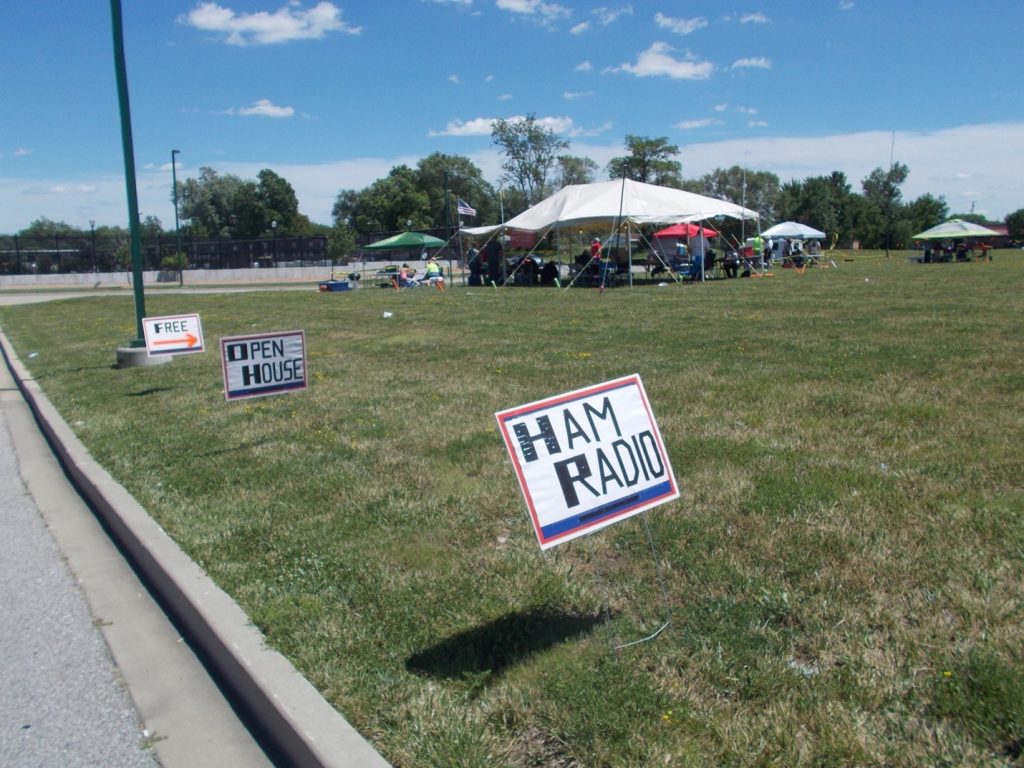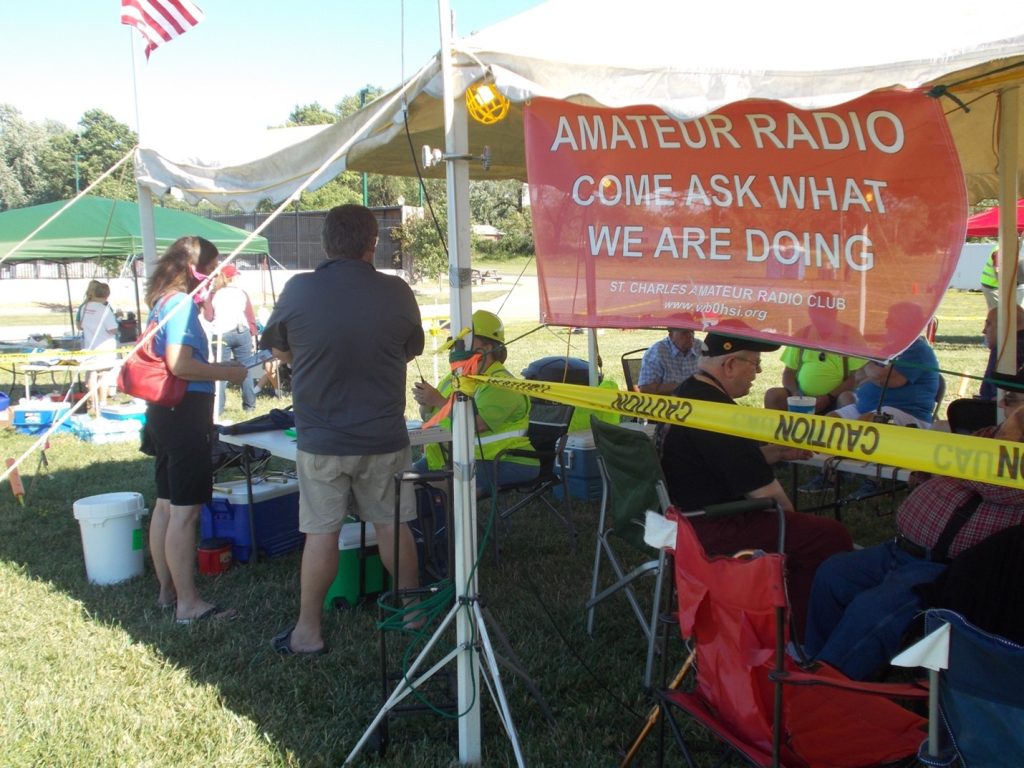Field Day is many things: a contest, emergency communications exercise, club social event, and a way to raise public awareness of ham radio. Regardless of which aspect you embrace, you can increase your Field Day score and the general public’s consciousness at the same time by adding five simple tips to your club’s Field Day strategy this year. Of course, be sure to read thelatest rules to stay informed of any last-minute changes.
Set Up in a Public Location (100 points)
Increase your visibility by setting up in a high-traffic area: a parking lot, a public park, or the offices of a welcoming local government agency, such as city hall or the police or fire department. Be sure to use approved signage on curbsides, walkways, and other high-traffic areas to invite the public to stop by.

Roll Out the Welcome Wagon (100 points)
Create a Public Information Table, a centralized location for the public to visit first. Have a “greeter” at the table to welcome visitors, a sign-in sheet (with a column for email address or phone number), an ARRL pamphlet or two explaining Field Day and ham radio, and contact information about your club, including social media pages and your website. Greeters should put in the effort to make a good presentation: wearing a polo shirt and nice jeans is a good starting point. Rotate your greeters if you have enough people.
Greeters can also take the public on a tour of the site and explain what each operating station is doing without disturbing the on-air operators. It’s great if the operators are willing to talk with the public, but be prepared in case they’re running a good pileup.
Be mindful of the language your club members use when interacting with the public. It’s easy in all trades or hobbies to get stuck using the familiar language of our peers. However, when inviting members from the outside world to visit your site, keep in mind that most people will not be familiar with terms like “QSO,” “HF,” “CW,” and other ham radio terminology.
The big takeaway: Don’t advertise your gathering as Field Day. Promote the event to the public as an “open house.” That simple phrase is used by many other groups when doing a public-facing event. Proper use of common language is more inviting than asking your visitors to figure out what your jargon means.


Invite the Media (100 points)
Send a press release to local TV stations, radio stations, and newspapers explaining what ham radio is and your civic involvement in the community. Qualifying publicity could be as simple as a listing in the paper’s “community calendar” of events or a mention on the media outlet’s Facebook or Instagram feeds. ARRL even has posters, radio public service announcements, and pamphlets on their website to help your club promote your effort. If you’re lucky enough to get a reporter to visit your site, employ all the strategies used at the Public Information Table listed above, including having a club member prepared to speak to the reporter about ham radio using easy-to-understand terms.
Get Social (100 points)
ARRL recently included a bonus for the use of legitimate social media. If your club has a presence on Facebook, Twitter or Instagram, use it to your advantage. Promote your Field Day event a week or two in advance and tag your local media or elected officials. Post photos during Field Day, including a reminder of your location so the public can stop by. If you want to get fancy, do a live stream of what’s going on at your site or a brief interview with the club president. Always be sure to tag other public-facing local organizations in your posts so they can help spread the word for you.
Get on the GOTA (LOTS of points)
If you’re a class A or F operation, using a Get On The Air (GOTA) station can help bring in lots of extra points. Having a dedicated GOTA Coach at your station is worth an extra 100 points, and getting members of the public to make supervised contacts is a great way to give people some “hands-on” experience with ham radio. Every GOTA contact is worth five points to your score, regardless of mode. Additional bonus points are available if GOTA contacts are made by people under the age of 18; read the official Field Day rules for details on these bonus points.
There you have it—500 bonus points for your club’s score with remarkably little extra effort. However your club enjoys Field Day, these simple tips can provide a solid boost to your Field Day score and help you get more visibility in your community. Have fun and be safe. I hope to work you this year!

